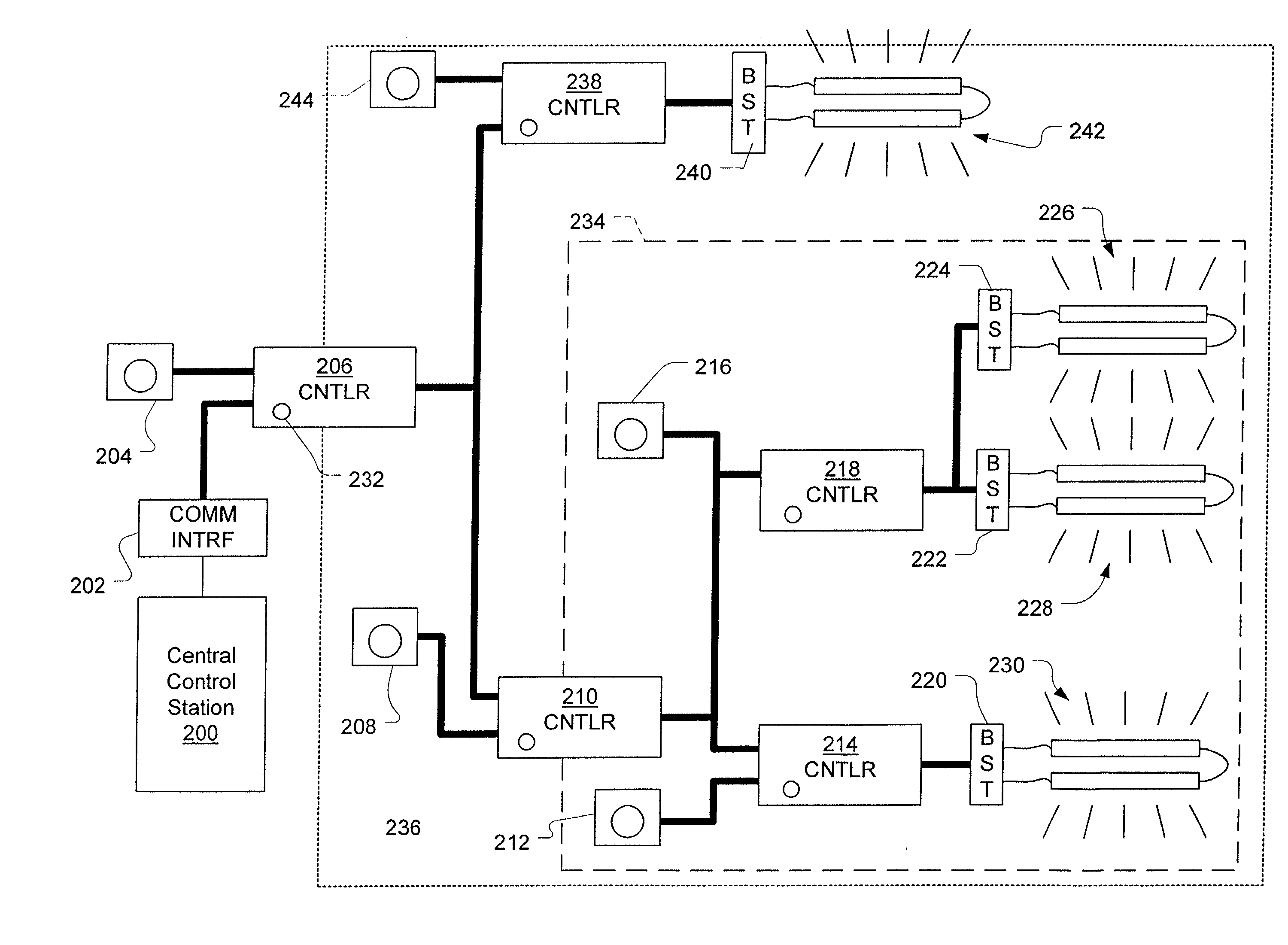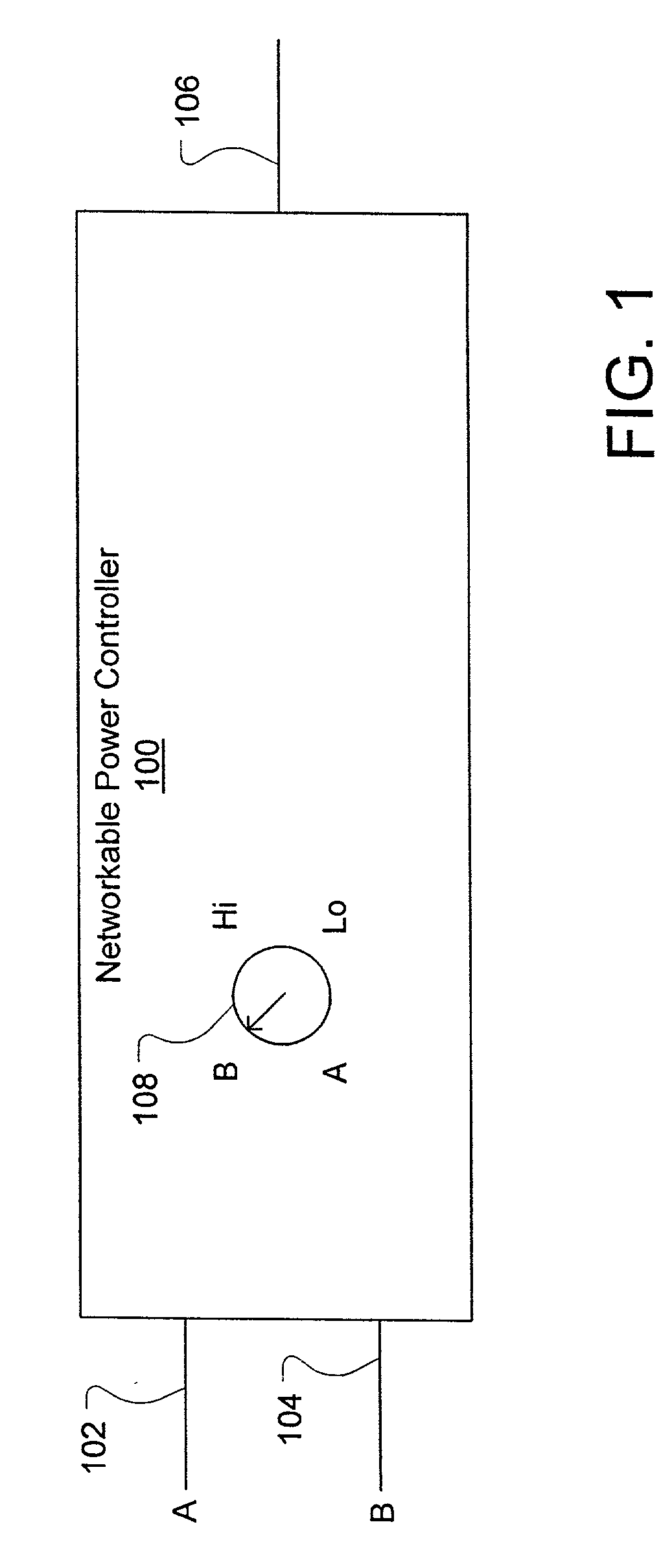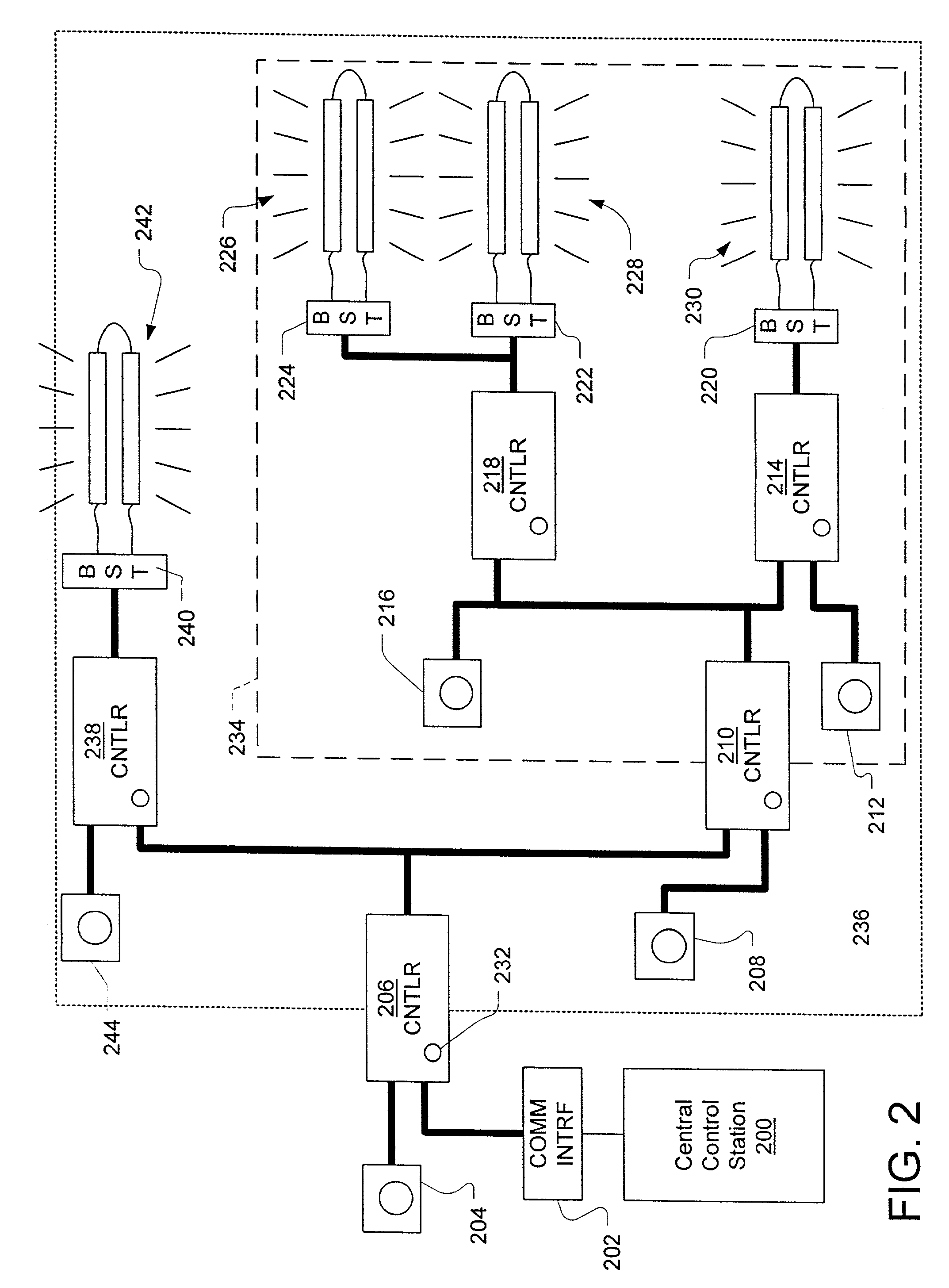Networkable power controller
a power controller and network technology, applied in the field of building control systems, can solve the problems of not being able to override the scheduled temperature setting on merely an individual office basis, many building control systems do not commonly accommodate personal overriding of the centrally controlled setting, and employees working on a weekend may be left without adequate air conditioning
- Summary
- Abstract
- Description
- Claims
- Application Information
AI Technical Summary
Benefits of technology
Problems solved by technology
Method used
Image
Examples
Embodiment Construction
[0024] A networkable power controller includes a mode selector for selectively conducting one of a plurality of input signals to an output of the networkable power controller, where the input signals and the output signals satisfy the same signaling protocol. The networkable power controller may be networked with other networkable power controllers, lighting ballasts, and user-controlled voltage selectors to provide a lighting control network. A power controller can include a mode selector that may be used in combination with other control devices or components, including a rotary dimmer control, a digital slide dimmer control, a demand load shedder component, a photometer component, and a communications interface, to provide a number of flexible embodiments of the present invention.
[0025] FIG. 1 illustrates an embodiment of a power controller. A power controller 100 includes two analog inputs 102 and 104 and an analog output 106. The output 106 is adapted to control a driver device...
PUM
 Login to View More
Login to View More Abstract
Description
Claims
Application Information
 Login to View More
Login to View More - R&D
- Intellectual Property
- Life Sciences
- Materials
- Tech Scout
- Unparalleled Data Quality
- Higher Quality Content
- 60% Fewer Hallucinations
Browse by: Latest US Patents, China's latest patents, Technical Efficacy Thesaurus, Application Domain, Technology Topic, Popular Technical Reports.
© 2025 PatSnap. All rights reserved.Legal|Privacy policy|Modern Slavery Act Transparency Statement|Sitemap|About US| Contact US: help@patsnap.com



